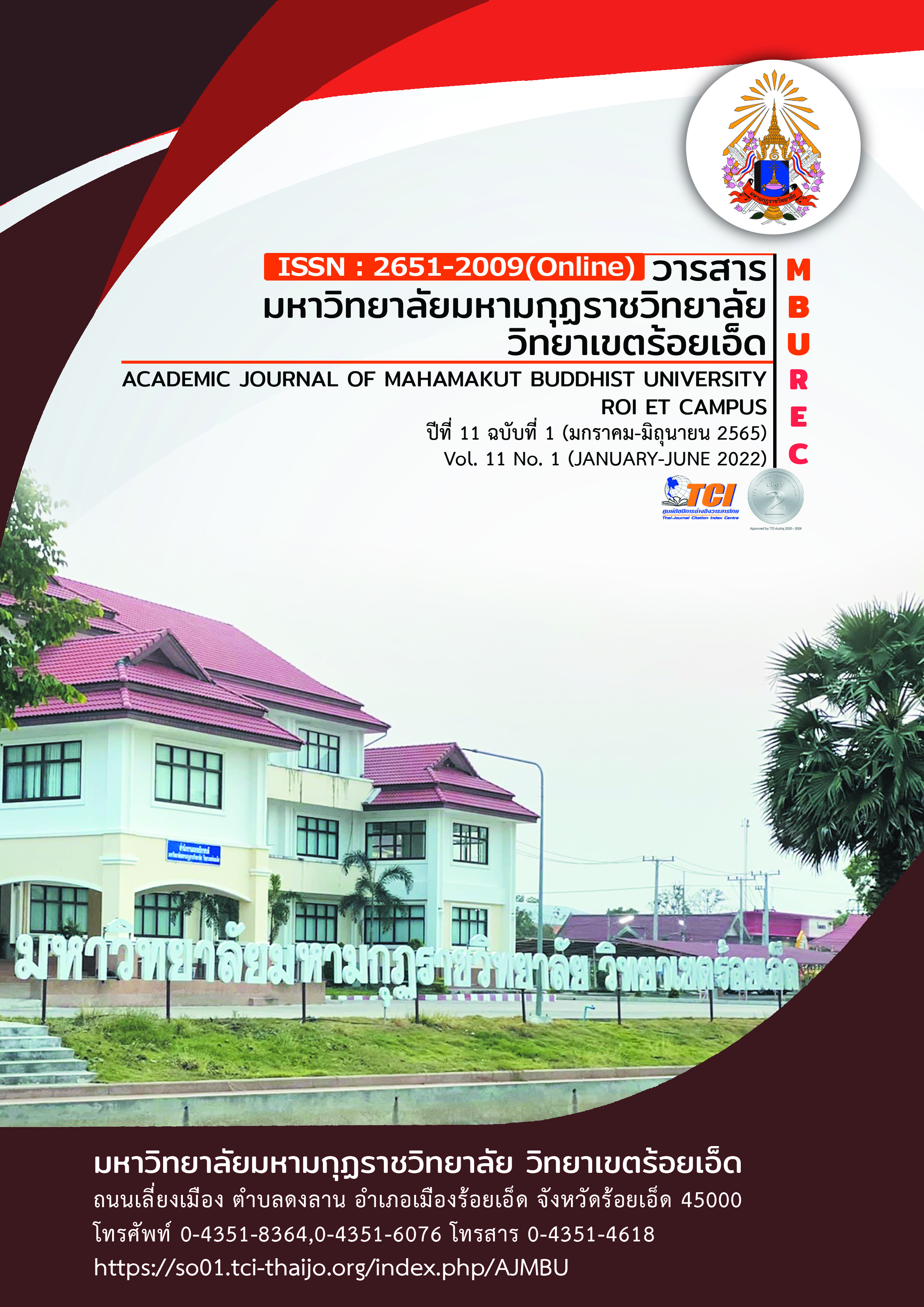DEVELOPING A MODEL OF LEARNING MANAGEMENT FOR IMPROVING THE ABILITIES IN PROBLEM-SOLVING THINKING AND GAINING KNOWLEDGE OF 3rd YEAR EARLYCHILDHOOD STUDENTS
Main Article Content
Abstract
The purposes of the research were 1) to study and analyze the data about the abilities in solving problems and gaining knowledge of 3rd year early childhood students, 2) to develop a model of learning management for improving the abilities in solving problems and gaining knowledge of 3rd early childhood students, 3) to implement the model of learning management for improving the abilities in solving problems and gaining of 3rd early childhood students, and 4) to evaluate the effectiveness of the model implementation in improving the abilities in solving problems and gaining knowledge of 3rd early childhood students. The sample group used in this research were 3rd early childhood students at Municipality School 1 (Khajornnetiyuth). The research tools were interview form, problem-solving ability and knowledge-seeking ability of early childhood children. Behavioral Observation Form and Student Satisfaction Questionnaire on Teaching Styles.The statistics used were mean, percentage, standard deviation, and t–test (Independent Sample t–test) was employed for hypothesis testing.
The results of the research were as follows: 1. the findings showed that the model of learning management for improving the abilities in solving problems and gaining knowledge of 3rd early childhood students based on the primary data analysis consisted of six steps. Step 1: Stimulus (S) Step 2: Planning (P) Step 3: Active Learning (A) Step 4: Repeat (R) Step 5: Constructivism(C) Step 6: Application (A). 2. The findings indicated that the average opinion of the experts toward the appropriateness of the model for learning activity management for the 3rd year early childhood students was at the highest level. Additionally, the average opinion of the experts toward the appropriateness of the learning activities in improving the abilities in solving problems and gaining knowledge of the 3rd year early childhood students was at a high level. 3. The finding indicated that the average ability of the 3rd year early childhood students in solving problems and gaining knowledge improved significantly after using the learning activities at the .05 level of the statistical significance. 4.The overall satisfaction of the students with the model of learning activity management for improving the abilities in solving problems and gaining knowledge of 3rd year early childhood students was at a high level.
Article Details

This work is licensed under a Creative Commons Attribution-NonCommercial-NoDerivatives 4.0 International License.
References
กองวิจัยทางการศึกษา. (2548). วิจัยเพื่อพัฒนาการเรียนรู้. กรุงเทพมหานคร : โรงพิมพ์การศาสนา.
คณะกรรมการการศึกษาแห่งชาติ. (2544). มาตรฐานการศึกษาเพื่อการประเมินคุณภาพภายนอกระดับการศึกษาขั้นพื้นฐาน. กรุงเทพมหานคร : สำนักงานคณะกรรมการการศึกษาแห่งชาติ.
คณะกรรมการพัฒนาการเศรษฐกิจและสังคมแห่งชาติ. (2550). ยุทธศาสตร์การพัฒนาระบบโลจิสติกส์ของประเทศไทย พ.ศ. 2550-2554. กรุงเทพมหานคร : คณะกรรมการพัฒนาการเศรษฐกิจและสังคมแห่งชาติ.
ชนิกานต์ ใจดี. (2557). การเปรียบเทียบความคิดสร้างสรรค์และความสามารถในการคิดแก้ปัญหาของนักเรียนชั้นอนุบาลปีที่ 2 ระหว่างการจัดประสบการณ์บูรณาการตามแนวคิดไฮสโคปและโครงการบ้านนักวิทยาศาสตร์น้อย. วิทยานิพนธ์การศึกษามหาบัณฑิต สาขาวิชาหลักสูตรและการสอน. มหาวิทยาลัยมหาสารคาม.
นิตยา คชภักดี. (2543). ขั้นตอนการพัฒนาของเด็กปฐมวัยตั้งแต่ปฏิสนธิถึง 5 ปี. กรุงเทพมหานคร : โรงพิมพ์คุรุสภาลาดพร้าว.
ศันสนีย์ ฉัตรคุปต์ และอุษา ชูชาติ. (2545). ฝึกสมองให้คิดอย่างมีวิจารณญาณ. กรุงเทพมหานคร : วัฒนาพานิช.
สายสุรี จุติกล. (2543). กระบวนการเรียนรู้ของเด็กปฐมวัย. กรุงเทพมหานคร : ห้างหุ้นส่วนจำกัด บางกอกบล๊อก-ออฟเซ็ทการพิมพ์.
อุษา ชูชาติ. (2545). ฝึกสมองให้คิดอย่างมีวิจารณญาณ(Critical Thinking). กรุงเทพมหานคร : ไทยวัฒนาพานิช.
Vygotsky. (1997). Educational psychology. Boca Raton : Lucie Press.


